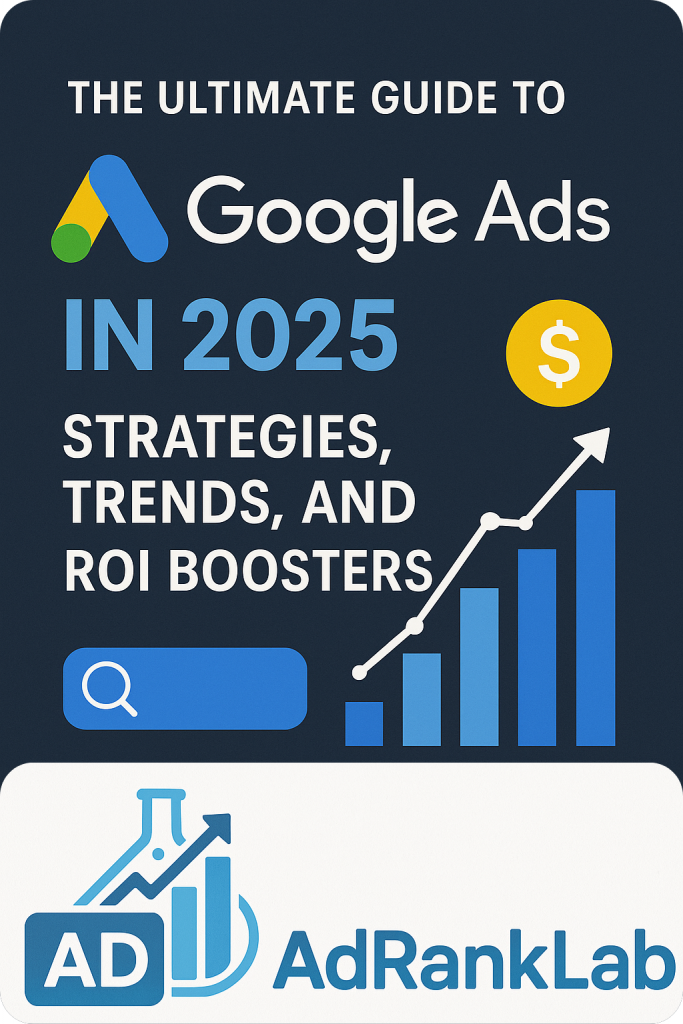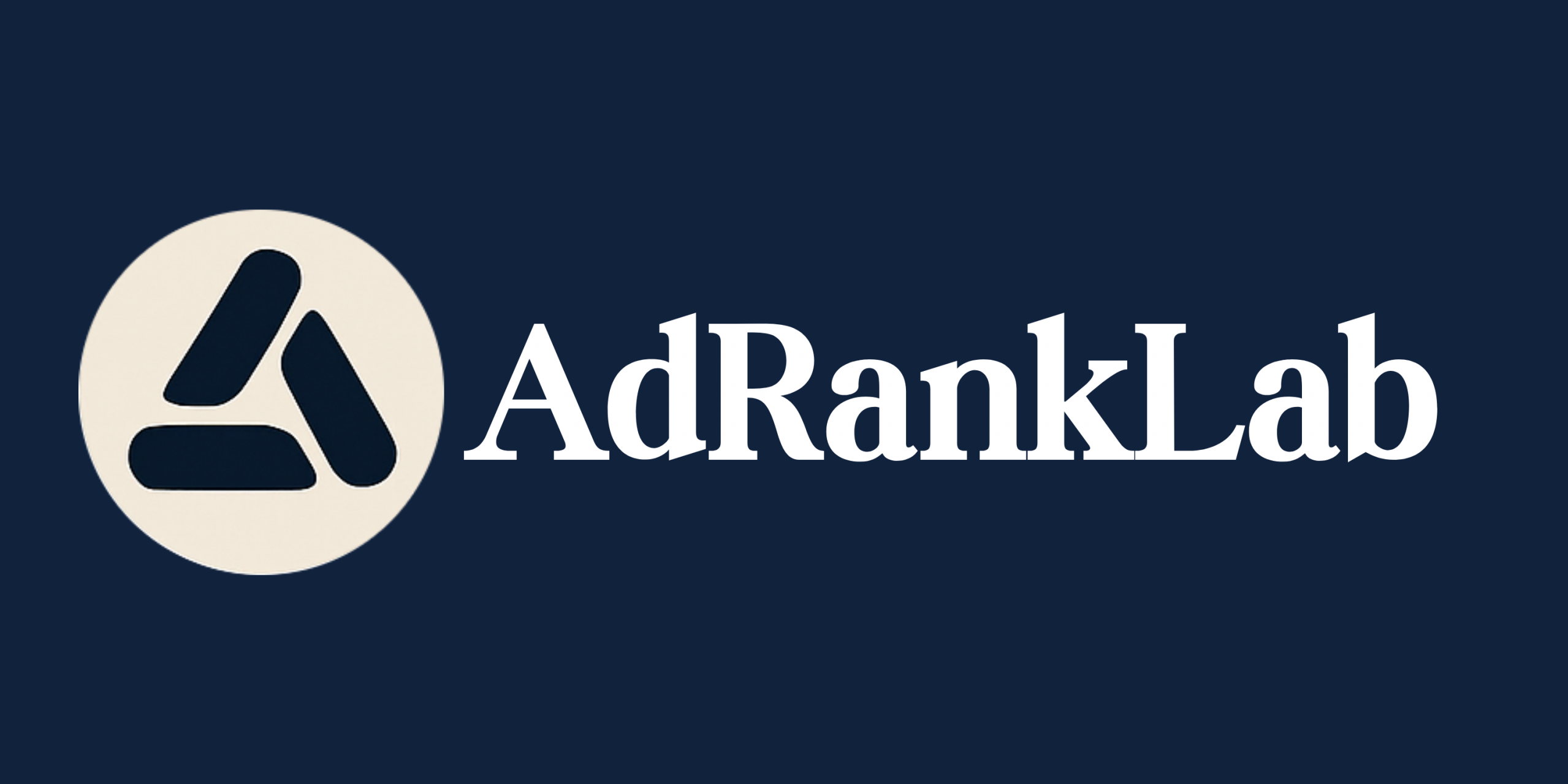Google Ads continues to evolve rapidly, offering businesses powerful tools to reach their target audience with precision. In 2025, staying ahead requires not only understanding the latest features but also mastering data-driven strategies to optimize return on investment (ROI). This comprehensive guide will walk you through the most effective Google Ads tactics, emerging trends, and proven ROI boosters tailored for corporate offices, entrepreneurs, startups, and businesses across e-commerce, SaaS, and diverse industries—globally, excluding Pakistan and India.
Introduction

Google Ads has become the cornerstone of digital advertising, driving over $224 billion in ad revenue for Google in 2024, a 10% year-over-year increase from 2023. With over 3.5 million active advertisers globally, the platform’s reach and sophistication are unmatched.
For businesses targeting corporate offices, startups, and e-commerce enterprises, understanding the nuances of Google Ads in 2025 is critical. This guide distills actionable strategies, backed by facts and figures, to help you craft campaigns that deliver measurable ROI.
Key Fact: The average click-through rate (CTR) for Google Search Ads across all industries is 3.17%, with e-commerce leading at 5.03%. (Source: Google Economic Impact Report, Q4 2024)
Google Ads Landscape in 2025
Platform Evolution
- Performance Max campaigns now account for 45% of spend among top advertisers, leveraging multi-channel reach across Search, Display, YouTube, and Discover.
- Responsive Search Ads replaced Expanded Text Ads, delivering up to 15% more conversions per campaign.
- Video action campaigns have surged by 60% in adoption, driven by the rise of short-form video consumption.
Market Trends and Benchmarks
- Global ad spend on Google Ads is projected to exceed $300 billion in 2025, growing at a 7% CAGR since 2021.
- Mobile devices now account for 70% of all Google Ads traffic, emphasizing the need for mobile-first ad creatives and landing pages.
Fact: Average Cost-Per-Click (CPC) for competitive sectors:
- Finance: $3.72
- Legal: $6.75
- E-commerce: $1.16
(Source: WordStream Benchmark Report, 2024)
Setting Up for Success: Campaign Structures and Goals
Defining Clear Objectives
Every campaign should tie back to business goals: brand awareness, lead generation, or direct sales. In 2025:
- Lead generation campaigns see an average conversion rate of 12%.
- E-commerce drives an average ROAS (Return on Ad Spend) of 4:1.
Account Organization
- Use a single account per geographic region to manage budgets effectively, especially if targeting global markets excluding Pakistan and India.
- Structure campaigns by product categories or service lines, maintaining consistent naming conventions.
Goal-Based Bidding
- Maximize Conversions: Best for high-volume lead gen with a consistent CPA (Cost Per Acquisition) target.
- Target ROAS: Set specific ROAS goals; the average target ROAS for SaaS companies is 800% in 2024.
Statistic: Companies that align bidding strategies with clear goals see a 25% higher conversion rate than those using automated bids without targets.
Keyword Strategies and Match Types
Keyword Research and Intent Mapping
- Leverage tools like Google Keyword Planner, semi-automatic scraping, and third-party platforms (e.g., SEMrush) to identify long-tail keywords with lower competition (< 500 monthly searches) and higher intent.
Match Types: Balance Reach and Precision
| Match Type | Reach | Control | Use Case |
|---|---|---|---|
| Broad Match | High | Low | Early-stage research |
| Broad Match Modifier | Medium | Medium | Expand reach with control |
| Phrase Match | Medium | High | Mid-funnel targeting |
| Exact Match | Low | Very High | High-intent conversions |
- In 2025, phrase and exact match together drive 70% of high-quality leads.
- Negative keywords reduce wasted spend by up to 20% when updated weekly.
Audience Targeting and Segmentation
Custom Audiences and Insights
- Custom Intent Audiences now deliver a 35% lift in conversion rates, by targeting users based on recent search behavior.
- Customer Match with email lists (capped at 500k entries) yields an average LTV (Lifetime Value) increase of 28%.
Demographic and Location Exclusions
- Exclude Pakistan and India by setting geo-targeting exclusions, ensuring ad spend focuses on high-value markets like North America, Europe, and APAC regions.
- Demographic bidding adjustments: Increase bids by 15% for audiences aged 25-44, the prime segment for B2B and SaaS.
In-Market and Affinity Segments
- In-Market segments for software and e-commerce shoppers provide a 45% higher CTR compared to general audiences.
- Combine with similar audiences to scale campaigns, capturing users resembling your best customers.
Ad Formats and Creative Best Practices
Responsive Search Ads (RSAs)
- Include 15 headlines and 4 descriptions; Google automatically tests combinations.
- Ads with all 15 headlines receive 30% more impressions on average.
Display and Video Ads
- Responsive Display Ads can access over 3 million sites, apps, and Gmail placements. Optimize with high-quality images (minimum 1200 x 628 px) and clear CTA.
- YouTube Shorts ads now support direct click-to-website links, with an average engagement rate of 8.5%.
Ad Extensions
- Sitelink Extensions: Increases CTR by 15%.
- Lead Form Extensions: Capture up to 20% of leads directly within the ad.
- Callout Extensions: Highlight unique offerings (e.g., “24/7 Support”, “Free Demo”) to boost ad relevance.
Automation and AI in Google Ads
Smart Bidding Strategies
- Target CPA and Target ROAS use machine learning to optimize bids in real time. Advertisers report a 20-25% decrease in CPA when leveraging smart bidding.
Performance Max and AI-Driven Insights
- Performance Max campaigns outperform standard Search+Display mixes by 12% in conversion value when budgets are consistently allocated.
- Use AI-driven budget insights to reallocate underperforming budgets, improving overall ROI by 18%.
Automated Asset Creation
- Google’s Ad Creative Studio can generate multiple ad variations, reducing manual creative time by 40 hours per month for large accounts.
Performance Tracking and Analytics
Conversion Tracking Setup
- Implement Google Tag Manager and Google Analytics 4 (GA4) to capture website events and cross-device conversions, which account for 25% of total conversions.
Data-Driven Attribution
- Switch from last-click to data-driven attribution for a more accurate view of conversion paths; leads to a 15% uplift in reported conversions.
Custom Reports and Dashboards
- Create BigQuery exports for large accounts (> $50k monthly spend) to analyze granular data.
- Use Looker Studio dashboards for real-time monitoring; 70% of high-performing advertisers refresh dashboards daily.
ROI Boosters: Budget Allocation and Bidding Strategies
Budget Distribution
- Allocate 20% of budget to testing new channels (e.g., Discovery, YouTube Shorts).
- Reserve 30% for top-performing campaigns and 50% for expansion and scaling.
Seasonal and Event-Based Adjustments
- Increase bids by 25% during peak shopping seasons (e.g., Black Friday, Cyber Monday).
- Plan ahead: holiday budgets should be set at least 60 days in advance to capture rising CPC trends.
Bid Simulations and Forecasting
- Utilize Google’s Bid Simulator to forecast CPC changes: advertisers who simulate bids monthly see a 10% reduction in unforeseen CPC spikes.
Emerging Trends and Innovations
AI-Powered Creative Optimization
- Tools like Phrasee and Persado use generative AI to craft headlines, boosting engagement by 11%.
Privacy and Consent-Driven Advertising
- With GA4 phasing out cookies, focus on first-party data; companies collecting consented first-party data see a 23% increase in ad relevance.
Integration with CRM and Marketing Automation
- Sync Google Ads with Salesforce or HubSpot to align ad spend with pipeline stages; increases lead-to-customer conversion by 18%.
Case Studies: Global Success Stories
Case Study 1: SaaS Company Achieves 900% ROAS
- Challenge: Low trial sign-ups
- Strategy: Target ROAS bidding with custom intent audiences
- Result: 900% ROAS, 3x increase in trial sign-ups within 3 months.
Case Study 2: E-commerce Brand Boosts Sales by 40%
- Challenge: Stagnant online sales
- Strategy: Performance Max campaign with dynamic remarketing
- Result: 40% sales uplift, 12% lower CPA.
Common Pitfalls and How to Avoid Them
- Overlooking Negative Keywords: Leads to wasted spend; review search terms weekly.
- Ignoring Mobile Experience: 70% of clicks are mobile; ensure landing pages load within 3 seconds.
- Underutilizing Extensions: Extensions can add 10-15% lift in CTR; implement all relevant ones.
Conclusion and Next Steps
In 2025, Google Ads offers unprecedented opportunities for businesses across industries. By combining data-driven strategies, AI-powered automation, and creative optimization, you can achieve significant ROI gains.
Action Plan:
- Audit your current campaigns and implement smart bidding.
- Expand into Performance Max and Video Shorts.
- Leverage first-party data and refine audience targeting.
Stay ahead of the curve by continuously testing and adapting. With the insights from this guide, you’re well-equipped to maximize Google Ads performance in 2025 and beyond.


